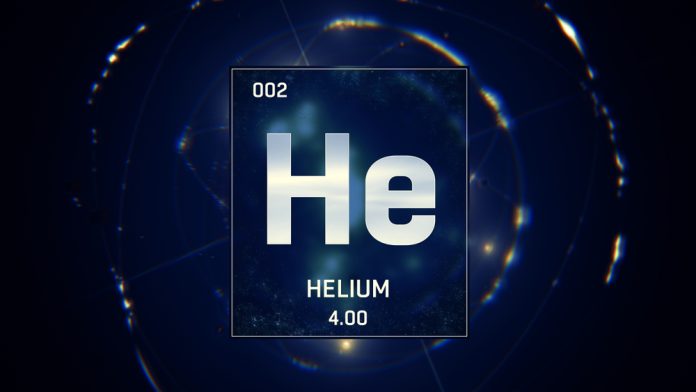With 2025 well underway, the global helium shortage is becoming more acute, posing challenges across healthcare, technology, and aerospace.
A surge in demand – intensified by geopolitical tensions and ageing extraction infrastructure – has raised urgent concerns about the sustainability of helium supply. While advancements in recycling and recovery technologies offer some hope, the high costs associated with these solutions may limit their widespread adoption.
The way industries respond will be critical in navigating the complexities of this increasingly scarce resource.
Helium’s role in healthcare and technology
Helium plays an essential role in the medical field, particularly in the operation of MRI machines, which require nearly 2,000 litres of liquid helium to function efficiently. Its inert properties make it ideal for use in sensitive medical environments, ensuring safe and reliable diagnostic imaging.
Healthcare accounts for roughly 32% of global helium consumption. Beyond MRI scanners, helium is crucial for technologies like nuclear magnetic resonance (NMR) machines, which rely on the gas to enhance imaging clarity and diagnostic precision. As medical imaging technologies evolve, so too does the demand for helium, underscoring its vital role in modern healthcare systems.
However, the ongoing helium shortage threatens to compromise the availability and affordability of critical imaging procedures. Reduced helium supply could delay diagnostics, affecting patient care and straining already overburdened healthcare systems.
To address these challenges, the healthcare industry must adopt more sustainable helium management strategies. Increased recycling efforts, contingency planning, and the pursuit of viable alternatives are essential to maintaining access to life-saving technologies while ensuring long-term resilience.
Causes of the helium shortage
The helium shortage stems from a combination of natural constraints and geopolitical disruptions. Helium is not mined directly but extracted as a byproduct of natural gas processing – a process limited to a handful of facilities worldwide. This makes the supply chain inherently fragile.
Geopolitical factors have only intensified the issue. For example, sanctions affecting Russian exports have disrupted global distribution channels, deepening the supply-demand imbalance. Additionally, output from the U.S. Federal Helium Reserve – a once-critical source – has declined, contributing to market instability.
Further compounding the issue are delays and setbacks at major production sites, such as Gazprom’s Amur gas processing plant in Russia, which had been expected to boost global supply. Ageing infrastructure at existing extraction facilities has also led to frequent disruptions.
These challenges reveal a pressing need for coordinated global efforts and investment in new extraction and recovery technologies. Without strategic action, industries worldwide will continue to face helium-related constraints.
Economic impacts across key industries
As helium becomes more scarce, its economic impact is being felt across multiple sectors. Prices have surged by 50–100% since early 2022, fuelled by persistent shortages and market instability.
The semiconductor industry, a backbone of modern electronics, is particularly vulnerable. Helium is essential in cooling and etching processes used in chip manufacturing. Supply disruptions and rising costs threaten to delay product rollouts and inflate prices for consumer electronics, ultimately slowing technological progress.
Healthcare facilities are also feeling the financial strain. Higher helium prices lead to increased operational costs, particularly for MRI and NMR systems. This could result in elevated healthcare fees and reduced access to critical diagnostic services, potentially widening health disparities.
In aerospace, helium’s role in rocket propulsion and equipment testing is indispensable. Shortages are leading to project delays and budget overruns, posing risks to both commercial ventures and scientific missions.
Recycling and conservation: A path forward
In response to the growing crisis, industries are increasingly turning to helium recycling and conservation. With demand expected to double by 2035, efficient use of existing supplies is more important than ever.
Modern helium recovery systems can recapture up to 90% of used helium. However, the initial investment can be a barrier, especially for smaller facilities. Despite the costs, awareness of long-term savings and environmental benefits is driving adoption among leading firms.
Major industry players are pioneering reclamation technologies that improve extraction and reuse efficiency. Parallel research into alternative superconducting materials that don’t require helium also holds promise.
Broadening awareness of helium conservation’s importance is crucial. Many stakeholders remain unaware of the economic and operational advantages of sustainable practices. Encouraging adoption across industries could significantly reduce the pressure on global supply.
The future of helium supply
While conservation efforts are crucial, future supply dynamics will depend on new sources and technological breakthroughs.
New helium reserves in Tanzania and China’s Bohai Bay Basin offer additional promise but require long-term investment and infrastructure development. These projects will take years to come online, necessitating careful planning and global cooperation.
Additionally, leading initiatives such as Pulsar Helium’s Topaz Project offer an exciting and abundant helium resource, with the road to production ramping up.
Meanwhile, recovery technologies continue to evolve. If widely adopted, they could mitigate some of the shortfall. Yet, high costs and technical barriers may delay their mainstream implementation.
In the face of continued market volatility and supply chain disruptions, industries must diversify their sourcing strategies and invest in alternatives. Long-term solutions will hinge on balancing immediate needs with sustainable practices that secure helium’s future for generations to come.









